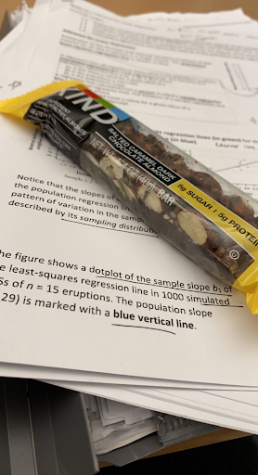Cultural Features Edition 3: Kimbap and Sushi

An attempt at making kimbap.
Most people know what sushi is, but do they know what kimbap is? Kimbap is often mistaken for sushi, but blurring the line between the differences can lead to the oversight of a culture. Kimbap is not just “Korean sushi.” Kimbap is a traditional Korean dish that is primarily made of seaweed, rice, and fillings such as cooked vegetables.
Korean is an evolution of the 쌈 (Ssam) tradition of eating wrapped food. Some other examples of 쌈 food include 배추쌈 (bae chu ssam = wrapping food with napa cabbage) or 호박잎쌈 (ho bak ssam = wrapping food with pumpkin leaf). It is very common to eat barbecued beef wrapped in perilla or pumpkin leaf.
Kimbap is 김쌈. In Korean, 김 (kim) means seaweed and 밥 (bap) means rice. Some of the common ingredients in kimbap are sesame oil (key!), marinated vegetables, fried egg, fish cake, and kimchi. Kimbap is usually very colorful and all the ingredients are cooked.
In contrast, sushi, from Japan, usually contains raw ingredients and almost always contains fish. Rather than sesame oil, rice vinegar is used in sushi. Sushi is usually paired with soy sauce, wasabi, or ginger, and there are many varieties of sushi (maki, nigiri, etc.).
Also, contrary to kimbap, sushi usually uses sticky rice prepared with salt, sugar, and vinegar. Kimbap rice is usually unaltered and is sometimes made with purple rice (흑미밥).
One of the biggest differences that can help you distinguish between kimbap and sushi is that kimbap is usually made with seaweed on the outside whereas sushi is usually made with rice on the outside.
Kimbap is a food that is very traditional and special in Korean culture. Making Kimbap with family in Korea is hard work yet a rewarding family activity like making kimchi is, as well.
Since kimbap is very convenient to eat, it is often packed for lunches, picnics, or paired with noodles.
Below is a simple recipe for kimbap. There is a lot of flexibility in the fillings you can add, so feel free to substitute fillings. Kimchi, cucumber and crab meat are also common ingredients that you can use.
Ingredients:
- 1.5 cups of raw spinach
- 1.5 teaspoons of sesame oil
- 0.5 of a large carrot, julienned
- 1 sheet of fish cake
- 3 oz Spam or other meat
- 2 eggs
- 4 strips of yellow radish
- 4 seaweed sheets
- 3 cups rice
- Salt and pepper
Directions:
- Boil and blanch the spinach (about 45 seconds). Rinse the spinach under cold water and add a teaspoon of sesame oil and a pinch of salt
- In separate batches, lightly sautée the carrots, fish cake, and spam over high heat. Season the carrots and fish cake with salt.
- Cook the beaten eggs with a pinch of salt and try to keep the egg in one piece (like a pancake). After, let the egg cool and cut it into long strips.
- Mix the cooked rice with 1 tablespoon of sesame oil and ¼ teaspoon of salt
- Assemble the kimbap by placing a seaweed slice on a bamboo mat (or cutting board) and spreading an even and thin layer of rice on the kimbap. Leave the top third of the seaweed empty.
- Layer the prepared ingredients in horizontal rows starting from the side closest from you (with rice).
- Roll the kimbap and use sesame oil as glue to keep the roll together.
- Brush the roll with sesame oil and cut the kimbap into smaller rolls.
- Enjoy!





